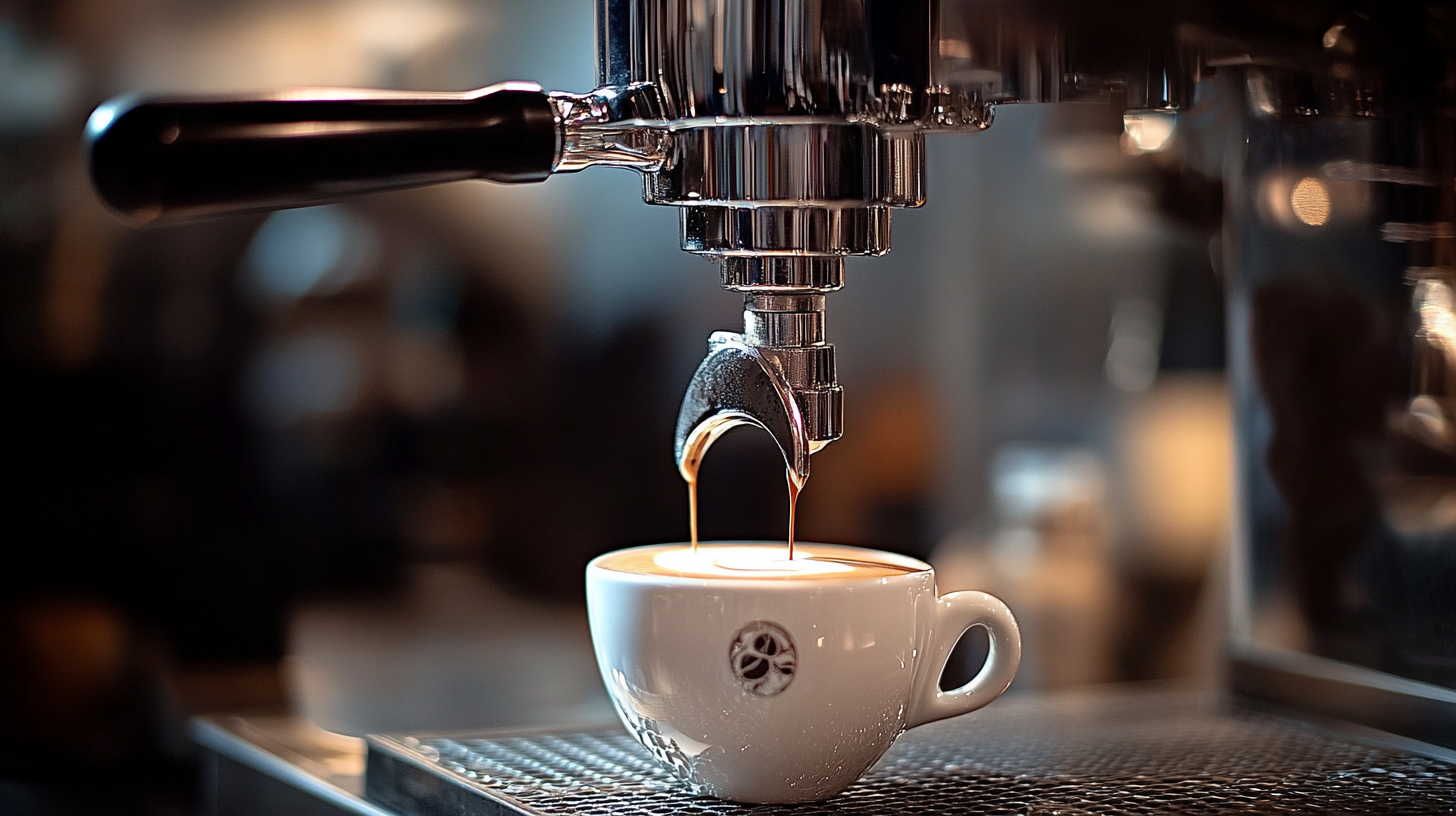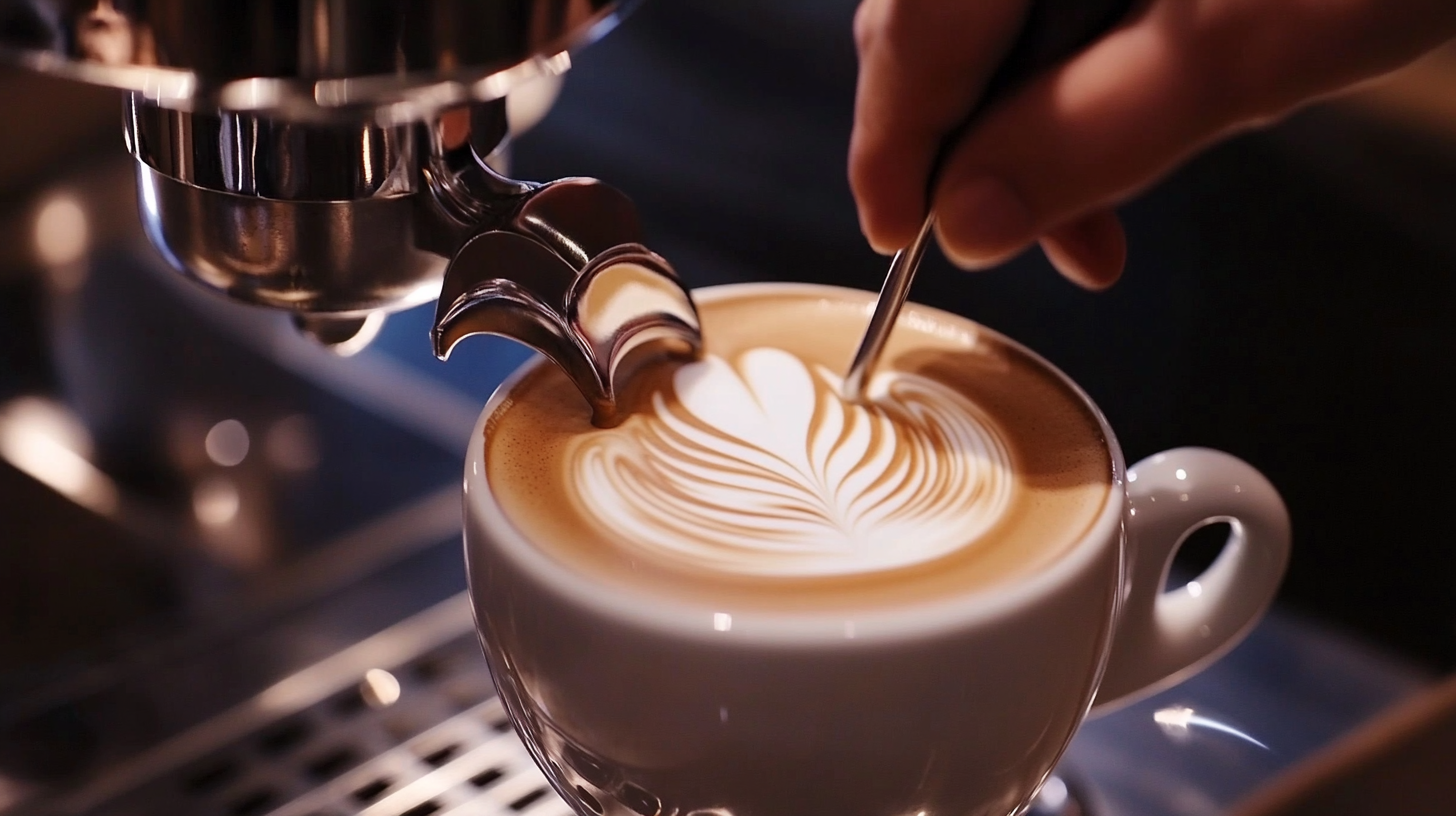Unlocking the Secrets: How to Maximize Your Best Latte Art Robot's Features and Specifications

The rise of the coffee culture has brought with it a growing interest in latte art, making the Latte Art Robot a game-changing innovation in the beverage industry. According to a recent market analysis from the Specialty Coffee Association, the global coffee equipment market, which includes advanced technologies like latte art robots, is projected to reach $55 billion by 2027, reflecting a strong demand for automation in coffee preparation.
As cafes and restaurants strive to enhance customer experience and differentiate themselves in a competitive market, understanding how to maximize the features and specifications of a Latte Art Robot becomes essential. This blog will explore key factors in selecting quality manufacturers and provide effective solutions for integrating these sophisticated machines into the coffee-making process, ensuring that baristas can create visually stunning and consistent latte art that delights customers.
Understanding the Key Features of Your Latte Art Robot for Optimal Use
To fully appreciate your latte art robot's capabilities, it’s essential to understand its key features and specifications. The consistency and quality of the milk frothing process are crucial for achieving stunning latte art. Look for robots equipped with advanced frothing technology that can create microfoam, as this will allow for intricate designs. Additionally, adjustable temperature settings enable you to customize the milk's sensitivity to heat, preserving flavor and texture.
Another important feature is the robot's precision control over pour patterns. Some models offer programmable settings for various designs, which can be particularly useful for those who want to replicate complex shapes or add a unique touch to every cup. Exploring the user interface can also enhance your experience; intuitive touchscreen controls or smart app integration simplify the operation, ensuring that you maximize the potential of your robot. By leveraging these features, you can transform every cup of coffee into a work of art, impressing both yourself and your customers.
Exploring Different Coffee Types and Their Compatibility with Latte Art
When it comes to crafting the perfect latte art, understanding the compatibility of various coffee types is crucial. Different beans present unique flavor profiles and textures that can impact the quality of your art. For example, robusta beans typically yield a richer crema compared to arabica, making them a favorable choice for creating bold designs. Additionally, specialty coffees with high milk fat content can enhance the texture and stability of the foam, providing a better canvas for intricate patterns.
To maximize your latte art, consider using a high-quality espresso machine that allows precise control over brewing parameters. Look for models that feature programmable settings for temperature and pressure, as these factors can significantly affect the extraction process. According to industry reports, a well-calibrated machine can improve the quality of your espresso shot by up to 30%, ultimately elevating your latte art experience.
**Tips:**
- Experiment with different milk types, such as whole milk versus oat milk, to observe varying frothing properties. Whole milk creates a creamier foam, while alternative milks may provide unique textures suitable for various designs.
- Use freshly roasted coffee beans, as they tend to produce better crema, ensuring your latte art stands out. Aim for beans roasted within the last two weeks for optimal freshness.
Unlocking the Secrets: How to Maximize Your Best Latte Art Robot's Features and Specifications - Exploring Different Coffee Types and Their Compatibility with Latte Art
| Coffee Type | Milk Type | Latte Art Compatibility | Ideal Robot Features |
|---|---|---|---|
| Espresso | Whole Milk | High | Precision Milk Frothing, Pattern Customization |
| Cappuccino | Skim Milk | Medium | Steam Control, Auto Latte Art Templates |
| Flat White | Oat Milk | High | Consistent Texture, Art Pattern Recognition |
| Mocha | Almond Milk | Medium | Versatile Frothing Options, Chocolate Integration |
| Macchiato | Soy Milk | Low | Quick Pour Mechanism, Minimalistic Design |
Step-by-Step Guide to Customizing Your Latte Art Designs
When it comes to creating stunning latte art, customizing your latte art robot's settings is crucial. According to the Specialty Coffee Association, 62% of coffee consumers claim that visual appeal significantly influences their coffee choices. To make the most of your latte art robot, start by familiarizing yourself with its features. Look for options that allow you to adjust the milk texturing and foam density—elements that directly affect the final design.
**Tip:** Experiment with different types of milk, such as oat or almond, as variations in fat content can alter how the foam behaves. This experimentation will help you achieve the perfect pour consistency for intricate designs.
A step-by-step approach to customizing your latte art designs can ensure a delightful presentation. Begin by selecting a base design, then adjust the robot’s nozzle height and angle. Fine-tuning these parameters allows you to create everything from simple hearts to complex rosettas. Remember, practice makes perfect; the more you work with your robot, the more refined your designs will become.
**Tip:** Keep a record of your successful designs and the settings used. This will serve as a personal guide and help you replicate your best work in the future, ensuring customer satisfaction and attracting new clientele.
Maintenance Tips to Ensure Longevity and Performance of Your Robot
 To keep your latte art robot operating at peak performance, regular maintenance is crucial. Begin by ensuring that you clean the robot's milk frothing wand daily to prevent any buildup that could affect its functionality. A simple mixture of water and vinegar can help eliminate residue, ensuring that your robot continues to produce velvety microfoam for your lattes.
To keep your latte art robot operating at peak performance, regular maintenance is crucial. Begin by ensuring that you clean the robot's milk frothing wand daily to prevent any buildup that could affect its functionality. A simple mixture of water and vinegar can help eliminate residue, ensuring that your robot continues to produce velvety microfoam for your lattes.
Additionally, stay vigilant about checking the robot's software updates. These updates often include important performance enhancements and bug fixes that can improve the efficiency and effectiveness of your machine. Set a regular schedule to review and implement these updates to maintain flawless operation.
Lastly, consider incorporating AI predictive maintenance tools into your care routine. These sophisticated tools can analyze your robot's performance data and predict potential issues before they arise, helping you address them proactively. By leveraging AI capabilities, you can significantly reduce downtime and extend the lifespan of your latte art robot, ensuring that it continues to impress customers with beautiful creations for years to come.
Troubleshooting Common Issues When Using Your Latte Art Machine
 When using a latte art machine, troubleshooting common issues is key to achieving that perfect cup. According to industry data from the Specialty Coffee Association, nearly 30% of baristas report that improper milk frothing is one of the top challenges they face. This can often stem from temperature inconsistencies or incorrect frothing techniques. Ensuring that your machine is set to the ideal temperature—between 150°F and 160°F for optimal milk texture—is critical. Regular maintenance, such as cleaning steam wands and checking for clogs, can significantly reduce these complications.
When using a latte art machine, troubleshooting common issues is key to achieving that perfect cup. According to industry data from the Specialty Coffee Association, nearly 30% of baristas report that improper milk frothing is one of the top challenges they face. This can often stem from temperature inconsistencies or incorrect frothing techniques. Ensuring that your machine is set to the ideal temperature—between 150°F and 160°F for optimal milk texture—is critical. Regular maintenance, such as cleaning steam wands and checking for clogs, can significantly reduce these complications.
Another prevalent issue is the calibration of the latte art robot. A 2022 report from the International Coffee Organization highlighted that 25% of machines fail to produce consistent results due to miscalibrated nozzles. To address this, it is crucial to frequently check the calibration settings and adjust them based on the type of milk or consistency you are aiming for. For instance, lighter milk yields better foam than alternatives with higher fat content, which can affect the robot's performance. By paying close attention to these factors, users can ensure their latte art machine operates smoothly and delivers stunning results.
